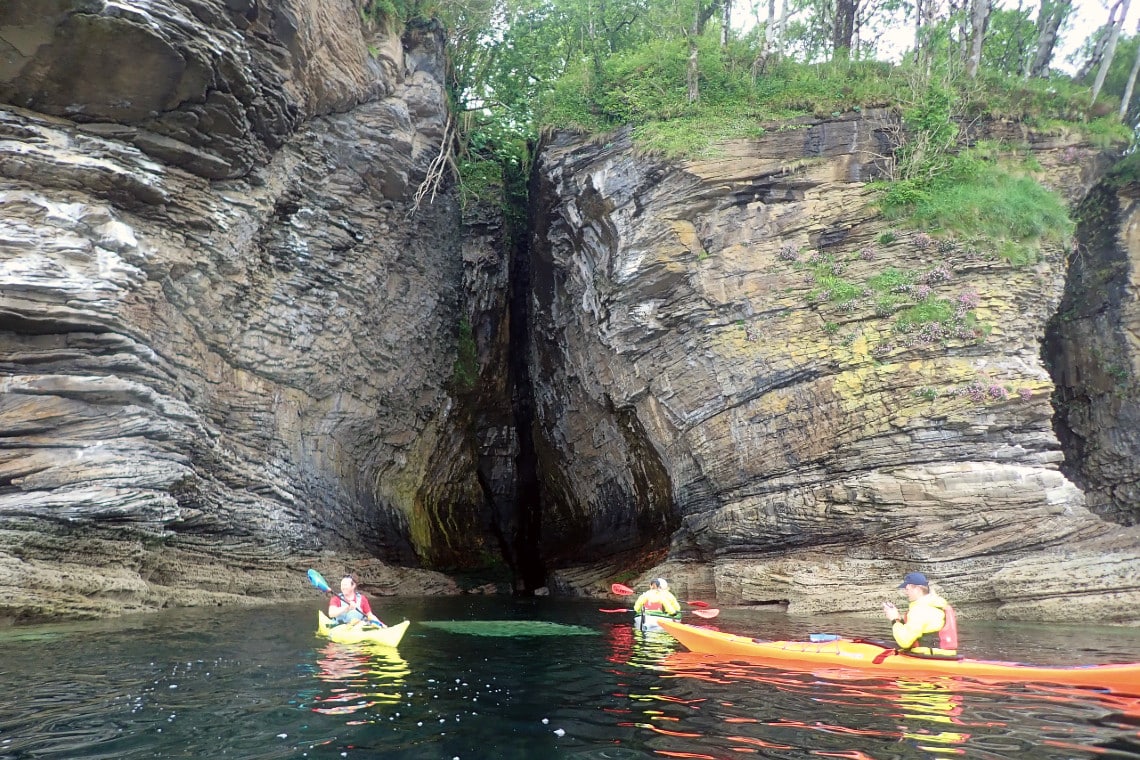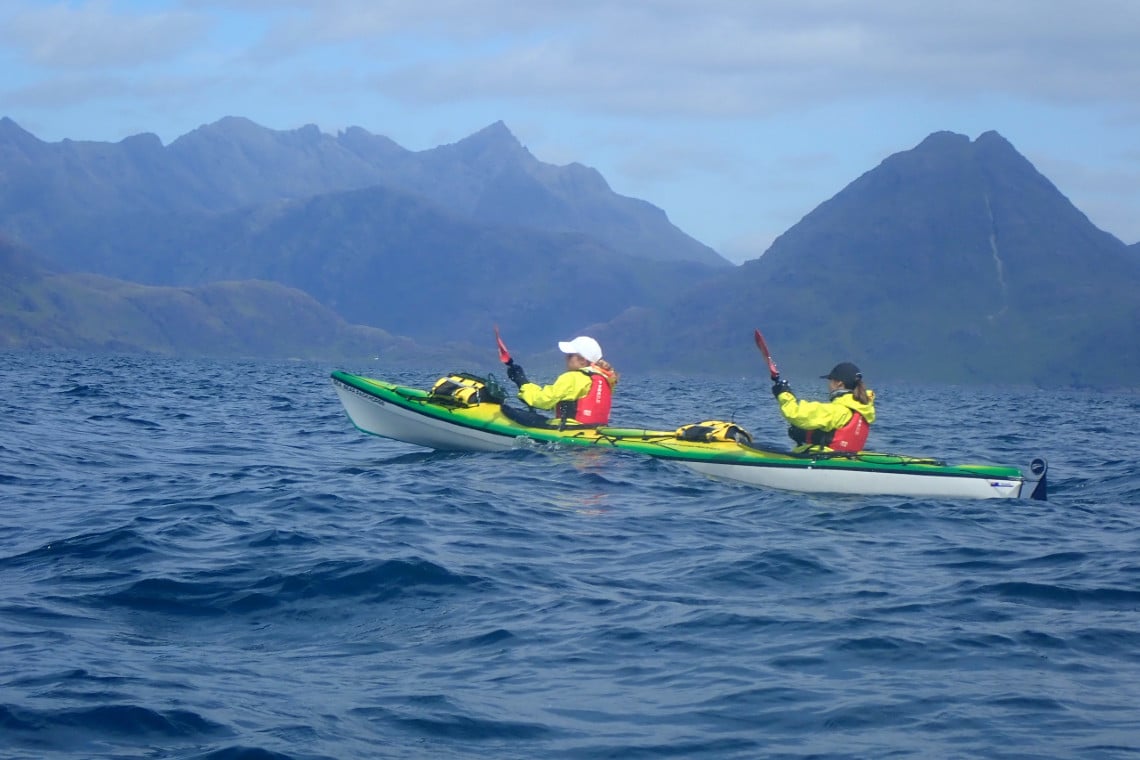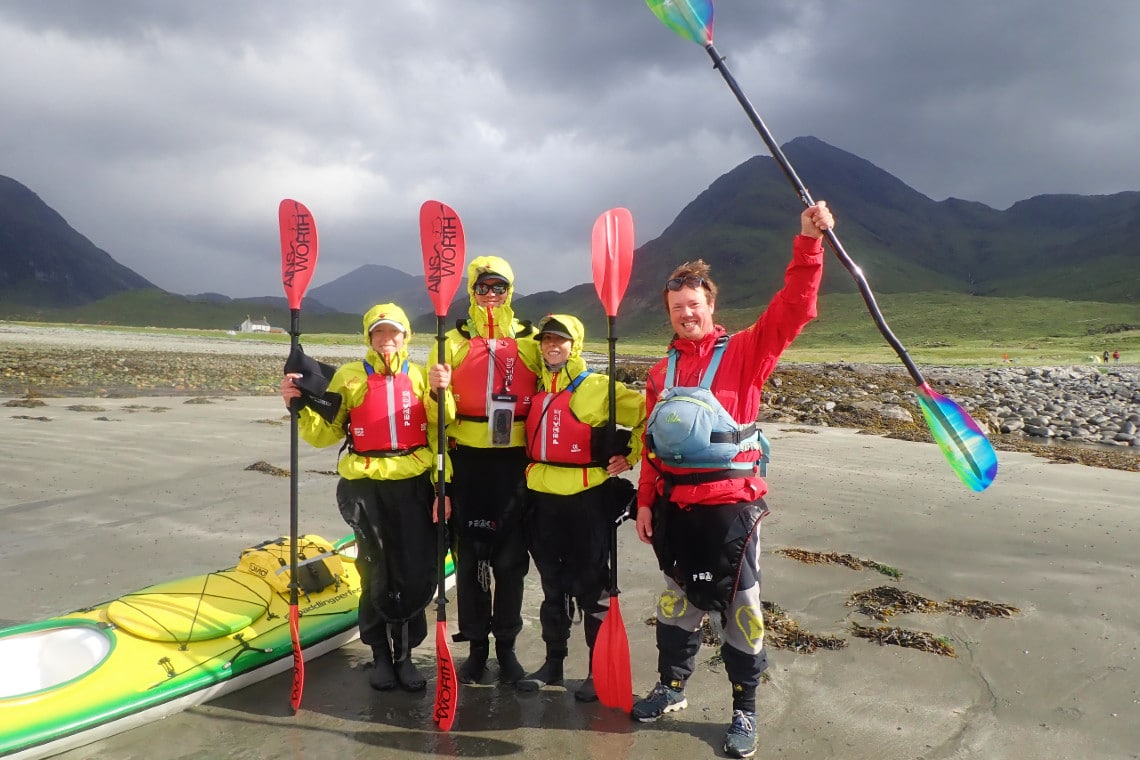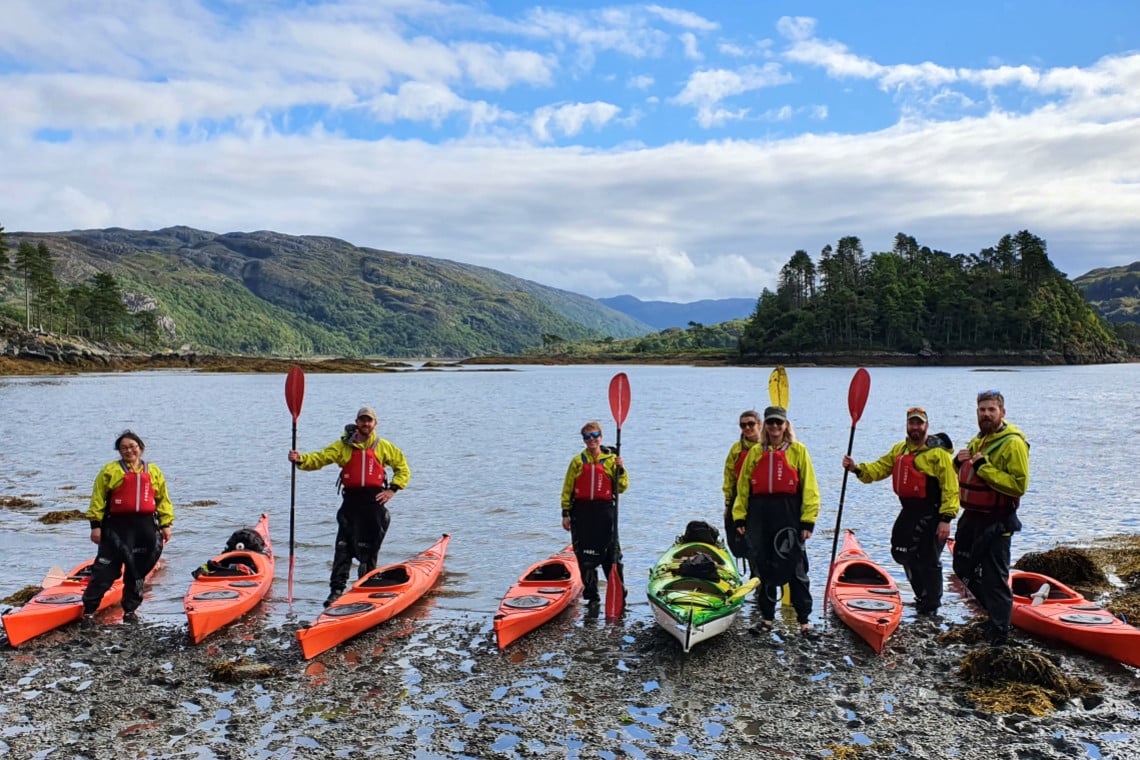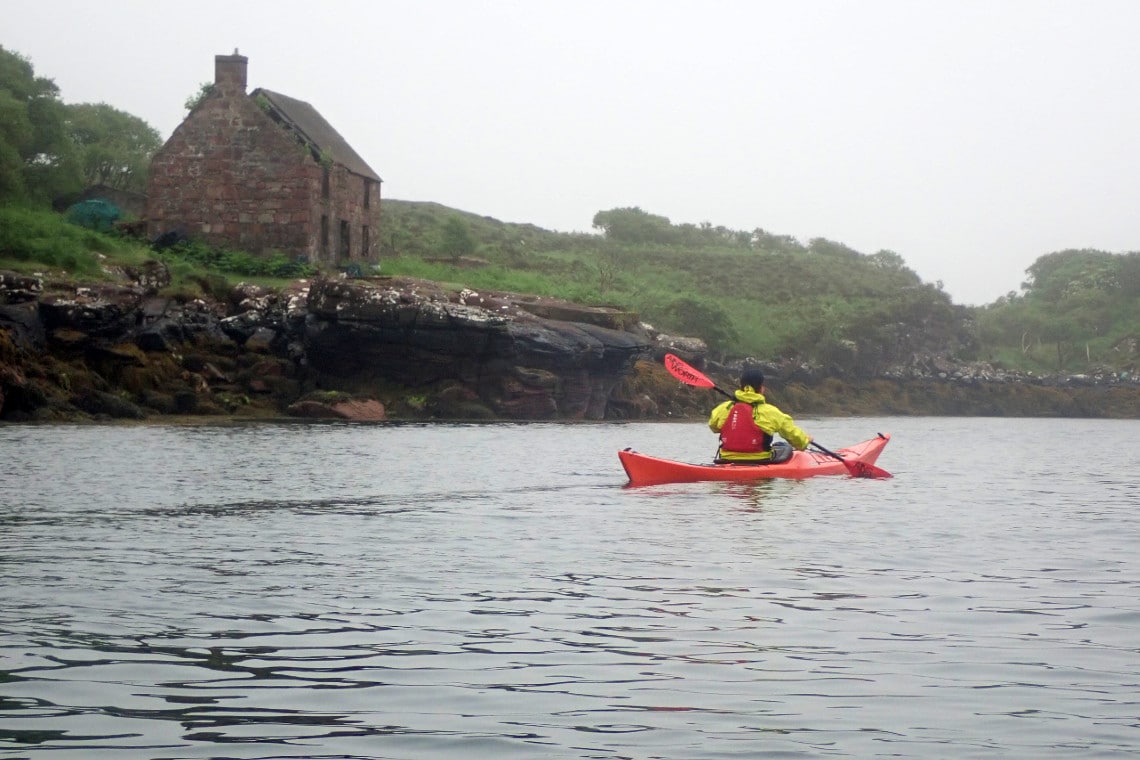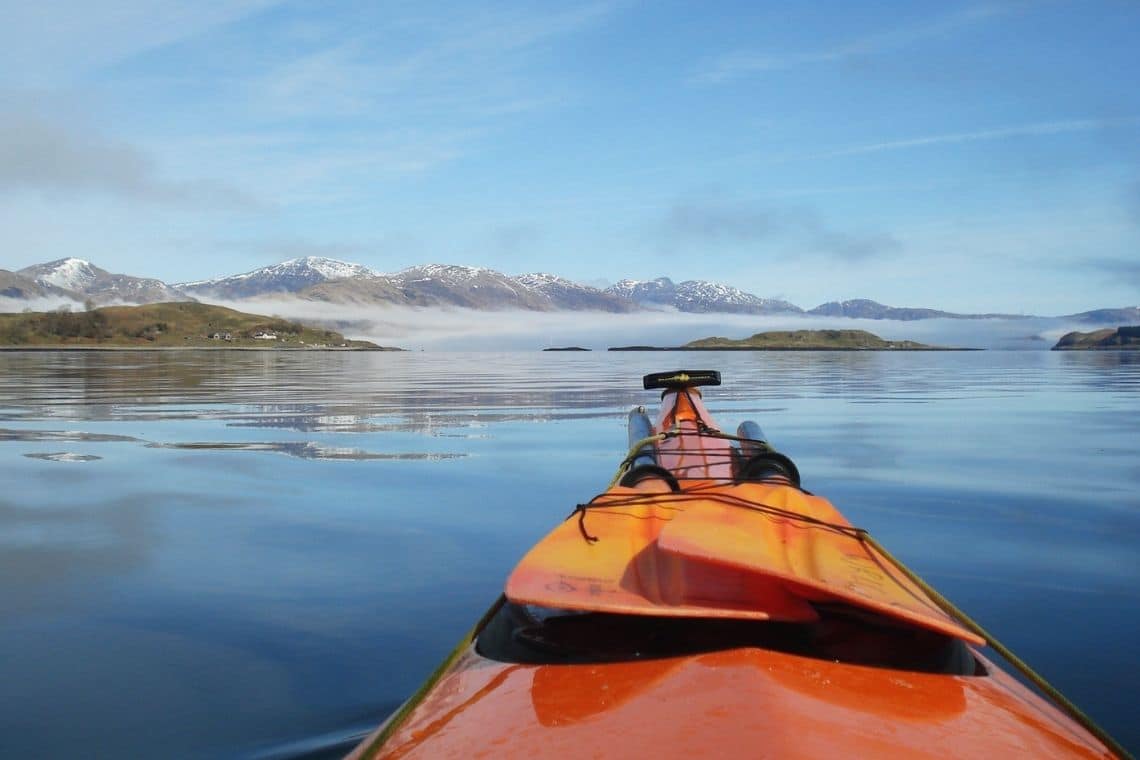Scotland’s west coast offers unmatched sea kayaking experiences with its rugged beauty, diverse wildlife, and countless islands waiting to be explored. Whether you’re planning a single-day adventure or a multi-day expedition, preparation is the key to unlocking the magic of these waters. Here’s a step-by-step guide, with a focus on safety, to ensure your trip is as unforgettable as the landscape.
1. Choose Your Route Carefully
Scotland’s west coast boasts options for all skill levels. Beginners might enjoy paddling around sheltered bays like Loch Torridon or around Moidart and Arisaig. For seasoned kayakers, routes around the Small Isles (Rum, Eigg, Muck, and Canna) or the challenging waters of Mull offer a thrilling adventure.
Safety Tip: Use detailed marine charts and research each area’s conditions, including potential hazards like rocky outcrops or strong tidal streams. Avoid overly ambitious routes—safety is better than a shortcut.
2. Check the Weather and Tides Thoroughly
Scotland’s weather can be unpredictable, even in summer. Utilize marine weather forecasts to plan your journey and ensure you’re prepared for changing conditions. Similarly, understanding tides is crucial—Scotland’s coastline features strong tidal flows, which can be both exhilarating and challenging.
Safety Tip: Familiarize yourself with the “rule of thirds” when planning around tides (one-third of your journey in a rising tide, one-third in slack tide, and one-third in falling tide). Never paddle out if there are warnings of storms or high winds.
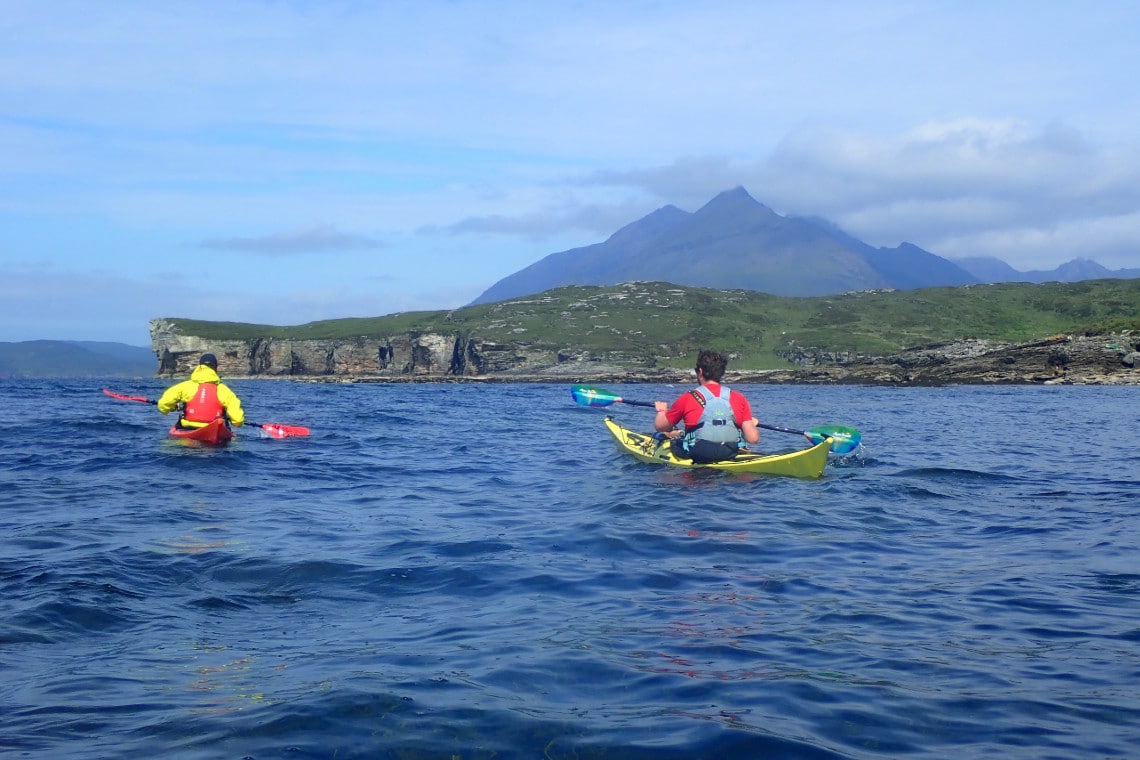
3. Gear Up with Safety in Mind
Your equipment can make or break your trip. Essential items include:
Kayak – A sea kayak (of course!) built for stability and speed, with bulkheads for buoyancy.
Safety Gear – A properly fitted life jacket (PFD), whistle, marine radio (if you are licensed to use one), and a paddle leash if you feel this helps. Consider a bilge pump for water removal and don’t forget a spray deck to keep you dry, and water our of your cockpit.
Dry bags – Use separate dry bags for essentials like clothing, food, first-aid kits, and communication devices. When you are on a multi-day trip separating your stuff in different colours of dry bags helps you find tings more quickly too.
Navigation Tools – A waterproof map, compass, or GPS device is a must. Know how to use them all!
Emergency Equipment: Pack a flare (check the Use By Date), mirror (for signalling), or light sticks to signal for help in low-visibility situations.
Comfort: Layered thermal clothing, neoprene gloves, and waterproofs to stay warm and dry.
Safety Tip: Test all your gear ahead of time. Know how to use your equipment before you hit the water.
4. Respect Wildlife and Environment
Scotland’s west coast teems with seals, otters, seabirds, and even dolphins. Observing these creatures is part of the magic—but always from a respectful distance.
Safety Tip: Avoid getting too close, as surprising or stressing wildlife can result in unpredictable behaviour. Seals, for example, might flee into the water, leaving pups vulnerable.
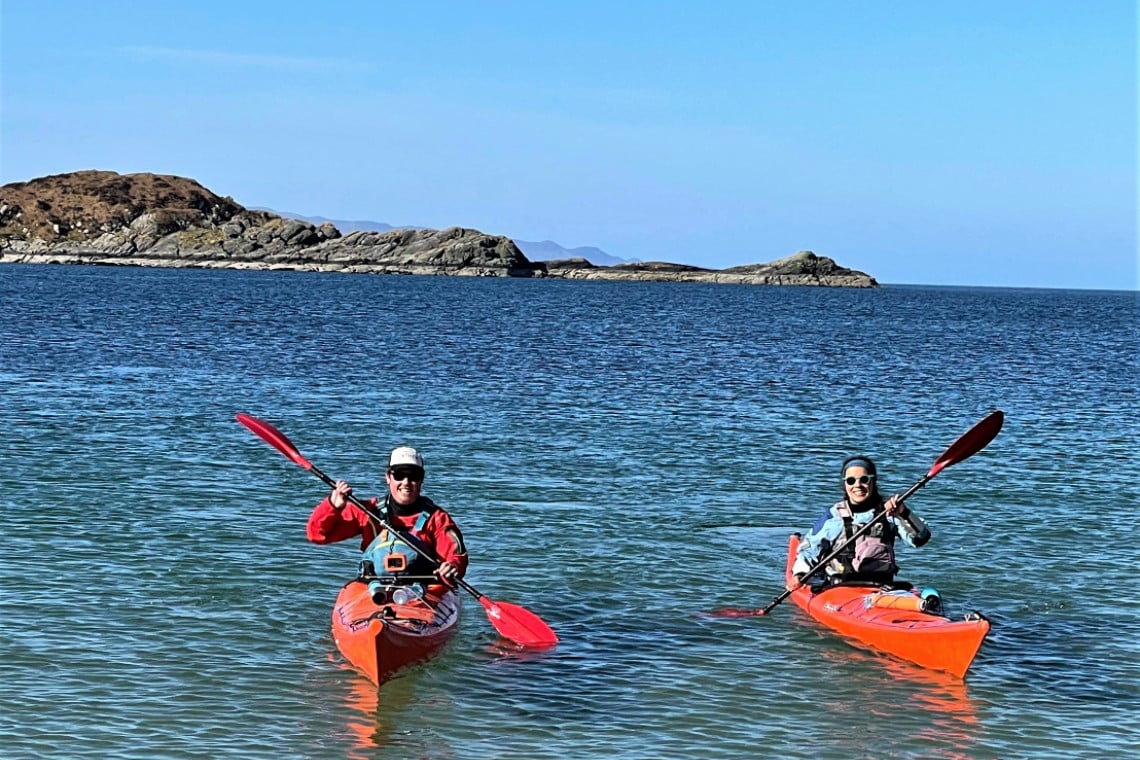
5. Paddle with a Plan and Backup
Having a clear plan is vital, but flexibility can save lives.
Safety Tip: Share your trip plan with a friend or family member before you go. Include details like your starting point, route, expected return time, and emergency contacts. If conditions change, adapt your plan accordingly.
6. Stay Safe on the Water
While on the water, vigilance is your best ally.
– Keep an eye out for changes in weather or water conditions.
– Stick close to the shoreline when possible—especially if you’re new to sea kayaking.
– Take regular breaks to avoid fatigue and stay hydrated.
Safety Tip: Practice “buddy checks” to ensure everyone in your group is safe and has the necessary gear. If paddling solo, consider using a personal locator beacon (PLB) for added safety (e.g. Garmin InReach).
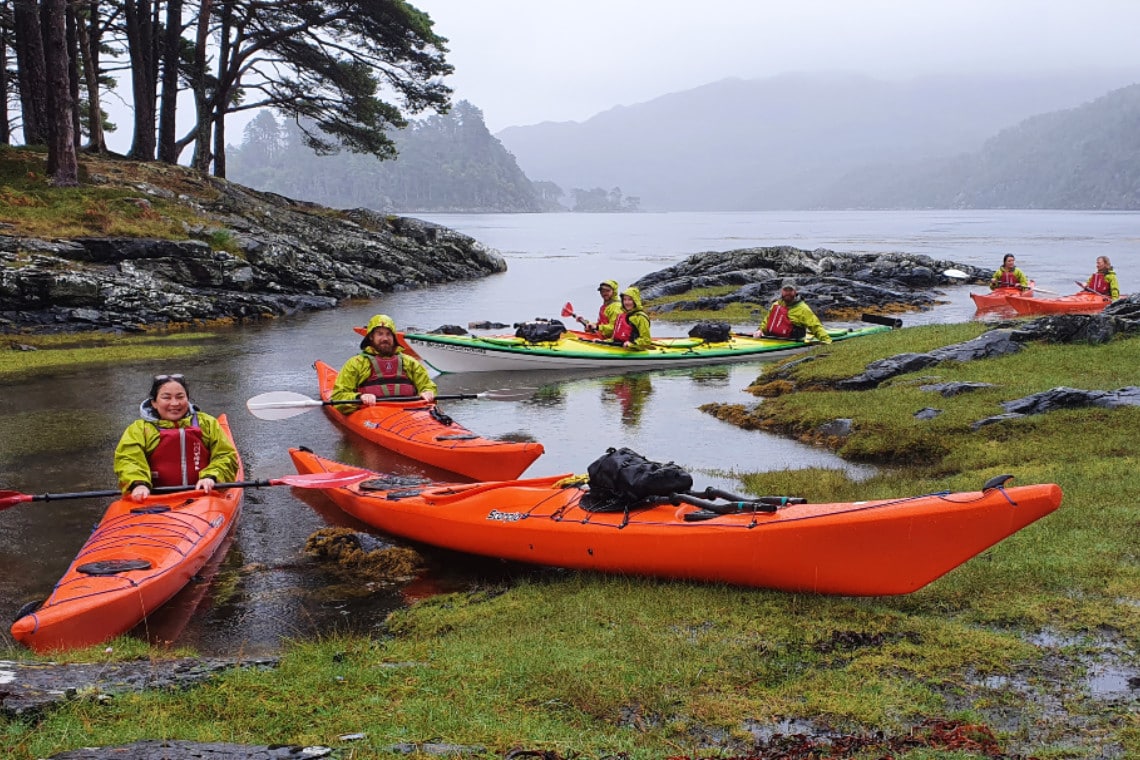
7. Prepare for Emergencies
Even with the best preparation, emergencies can happen.
Safety Tip: Take a sea kayaking course to learn essential skills, such as self-rescue, assisted rescue, and reading the water. Carry a first-aid kit with supplies tailored to marine environments, including treatments for hypothermia.
8. Make It Memorable
Take time to immerse yourself in the experience. Pause to watch the sunset over a remote island, have a swim in the sea, listen to the crash of waves against towering cliffs, and marvel at the solitude of the sea. These are moments you’ll carry with you forever.
Safety Tip: Prioritize safety over schedule—there’s no rush when you’re surrounded by such beauty.
If you love the sound of all this but don’t think you are up to organising this yourself, consider joining a guided kayak trip – I think In Your Element might be able to help with that – click here!
